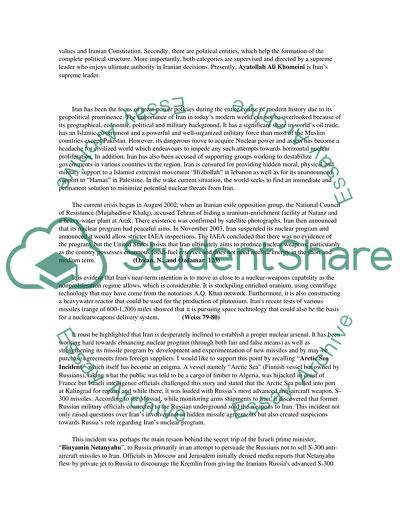Cite this document
(The Geopolitics of Iran Assignment Example | Topics and Well Written Essays - 2250 words, n.d.)
The Geopolitics of Iran Assignment Example | Topics and Well Written Essays - 2250 words. Retrieved from https://studentshare.org/politics/1558800-synthetis-note-iran-vs-rest-of-the-world-how-the-nuclear-issue-in-iran-could-sort-out-the-world-crisis
The Geopolitics of Iran Assignment Example | Topics and Well Written Essays - 2250 words. Retrieved from https://studentshare.org/politics/1558800-synthetis-note-iran-vs-rest-of-the-world-how-the-nuclear-issue-in-iran-could-sort-out-the-world-crisis
(The Geopolitics of Iran Assignment Example | Topics and Well Written Essays - 2250 Words)
The Geopolitics of Iran Assignment Example | Topics and Well Written Essays - 2250 Words. https://studentshare.org/politics/1558800-synthetis-note-iran-vs-rest-of-the-world-how-the-nuclear-issue-in-iran-could-sort-out-the-world-crisis.
The Geopolitics of Iran Assignment Example | Topics and Well Written Essays - 2250 Words. https://studentshare.org/politics/1558800-synthetis-note-iran-vs-rest-of-the-world-how-the-nuclear-issue-in-iran-could-sort-out-the-world-crisis.
“The Geopolitics of Iran Assignment Example | Topics and Well Written Essays - 2250 Words”. https://studentshare.org/politics/1558800-synthetis-note-iran-vs-rest-of-the-world-how-the-nuclear-issue-in-iran-could-sort-out-the-world-crisis.


